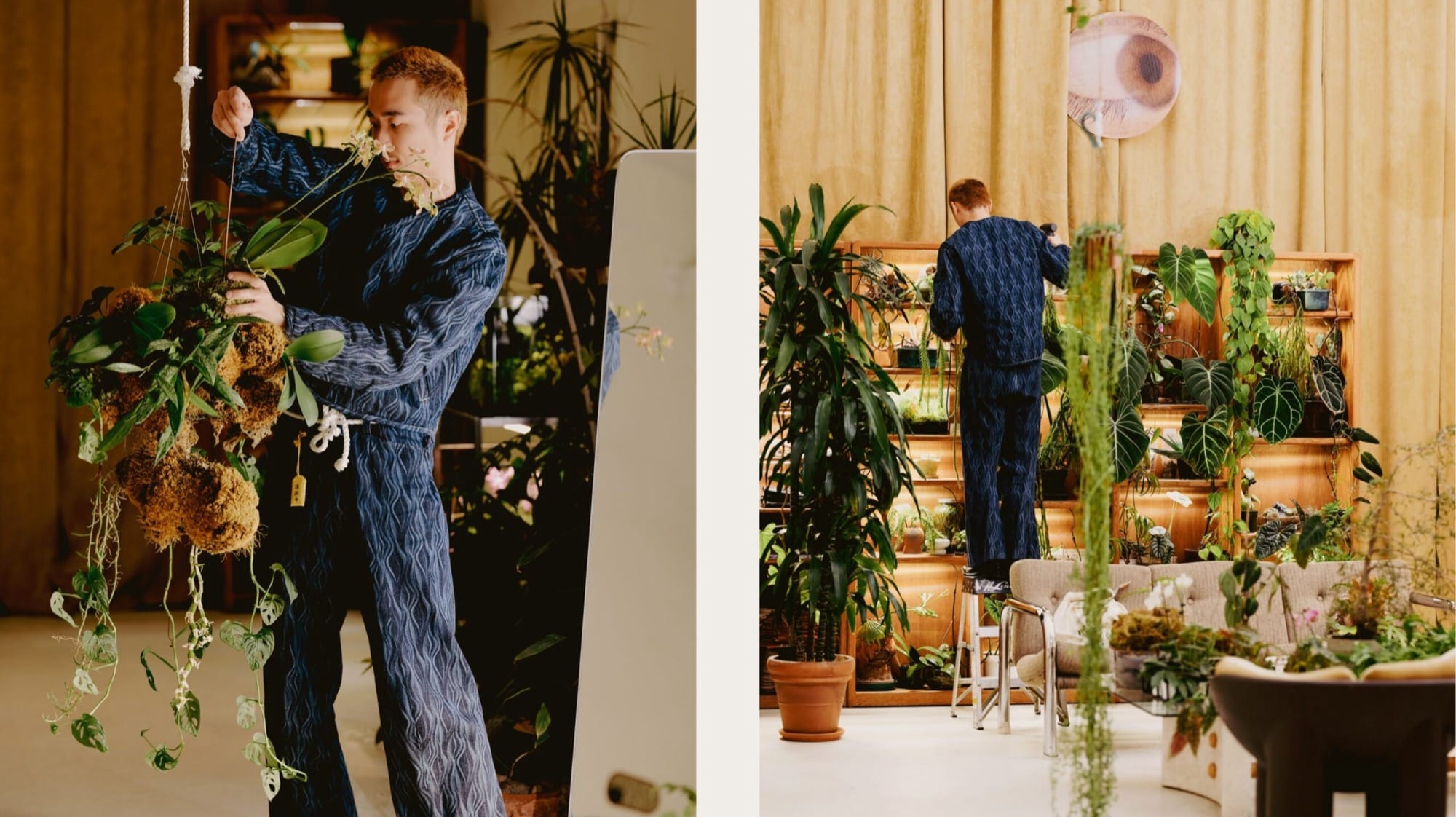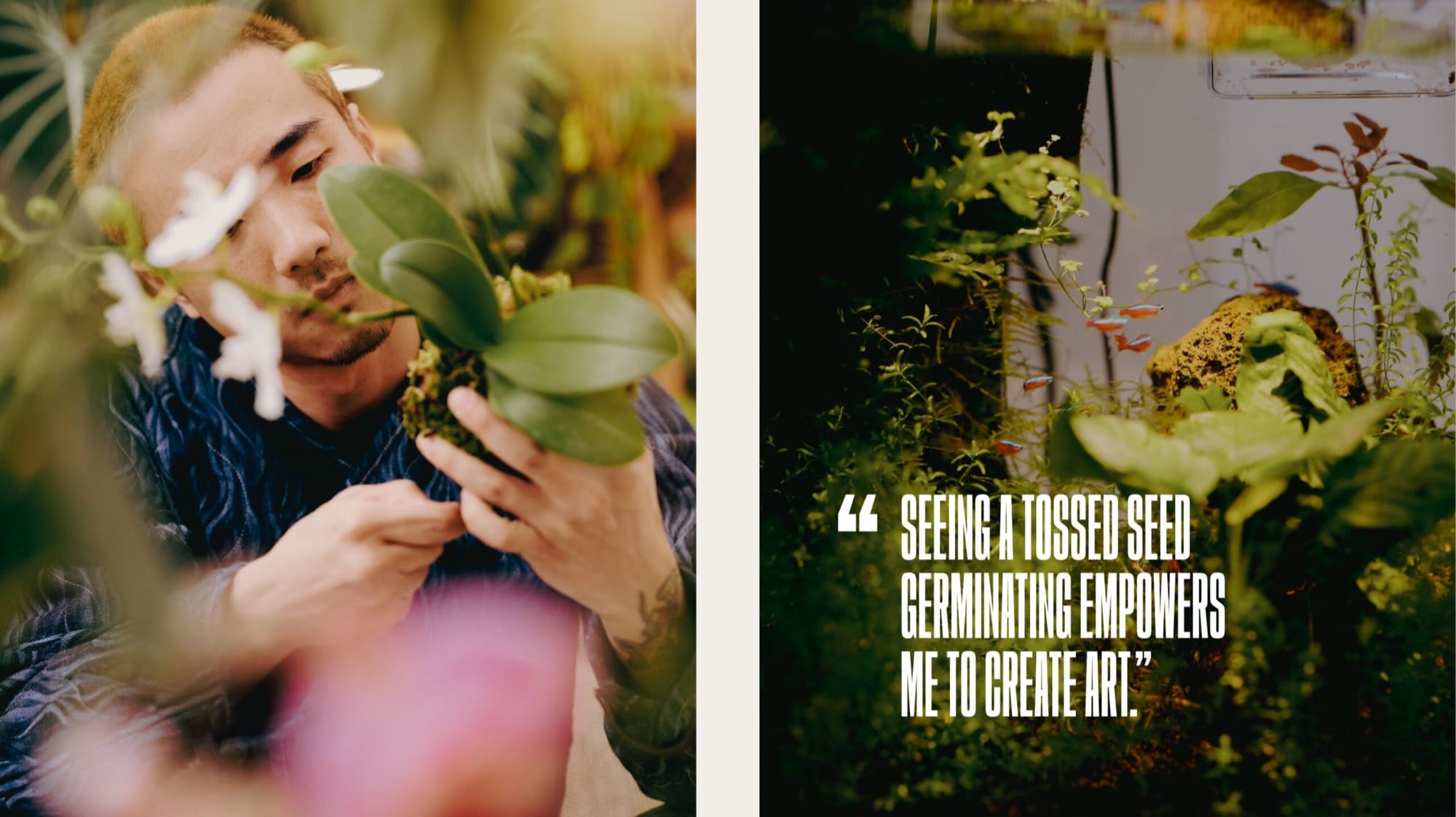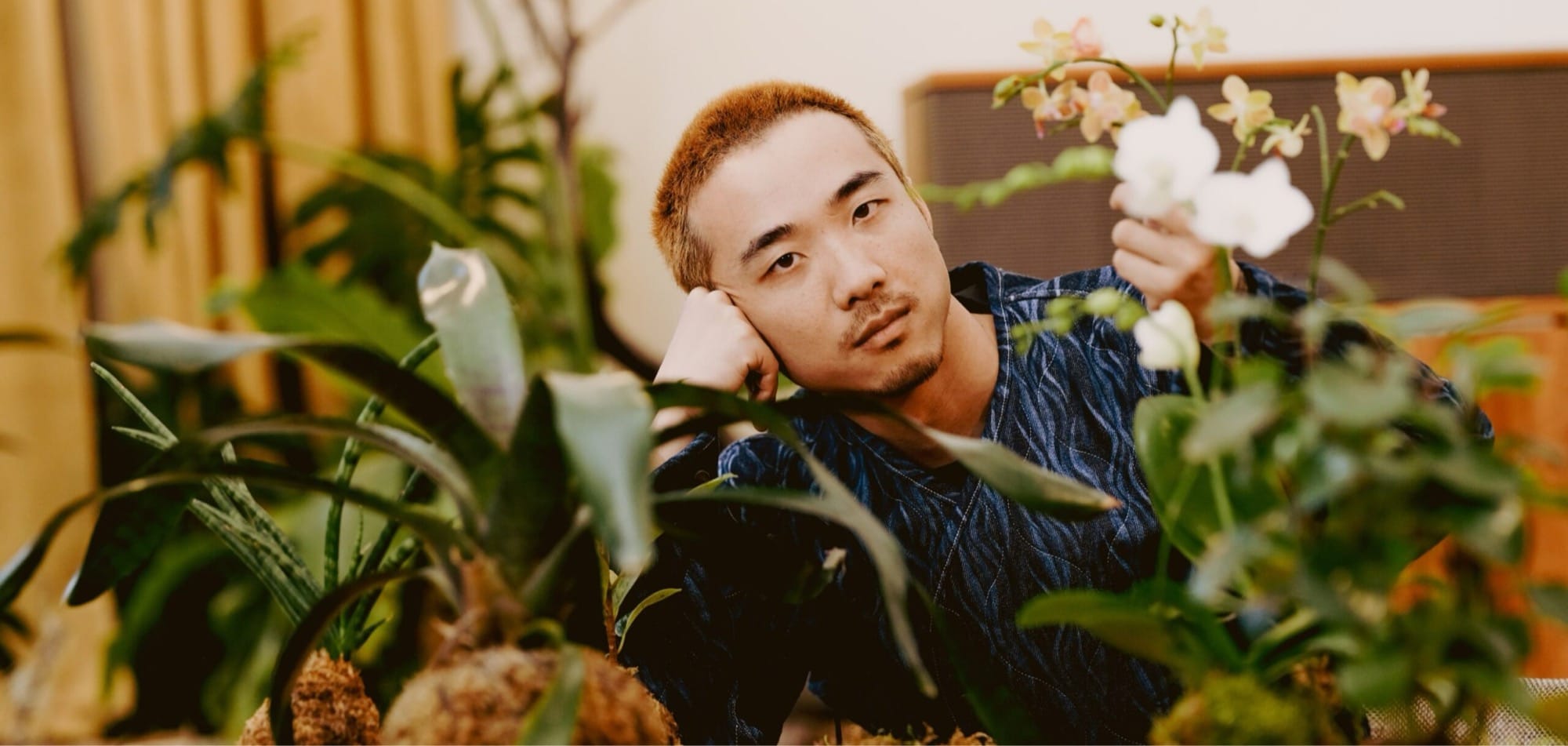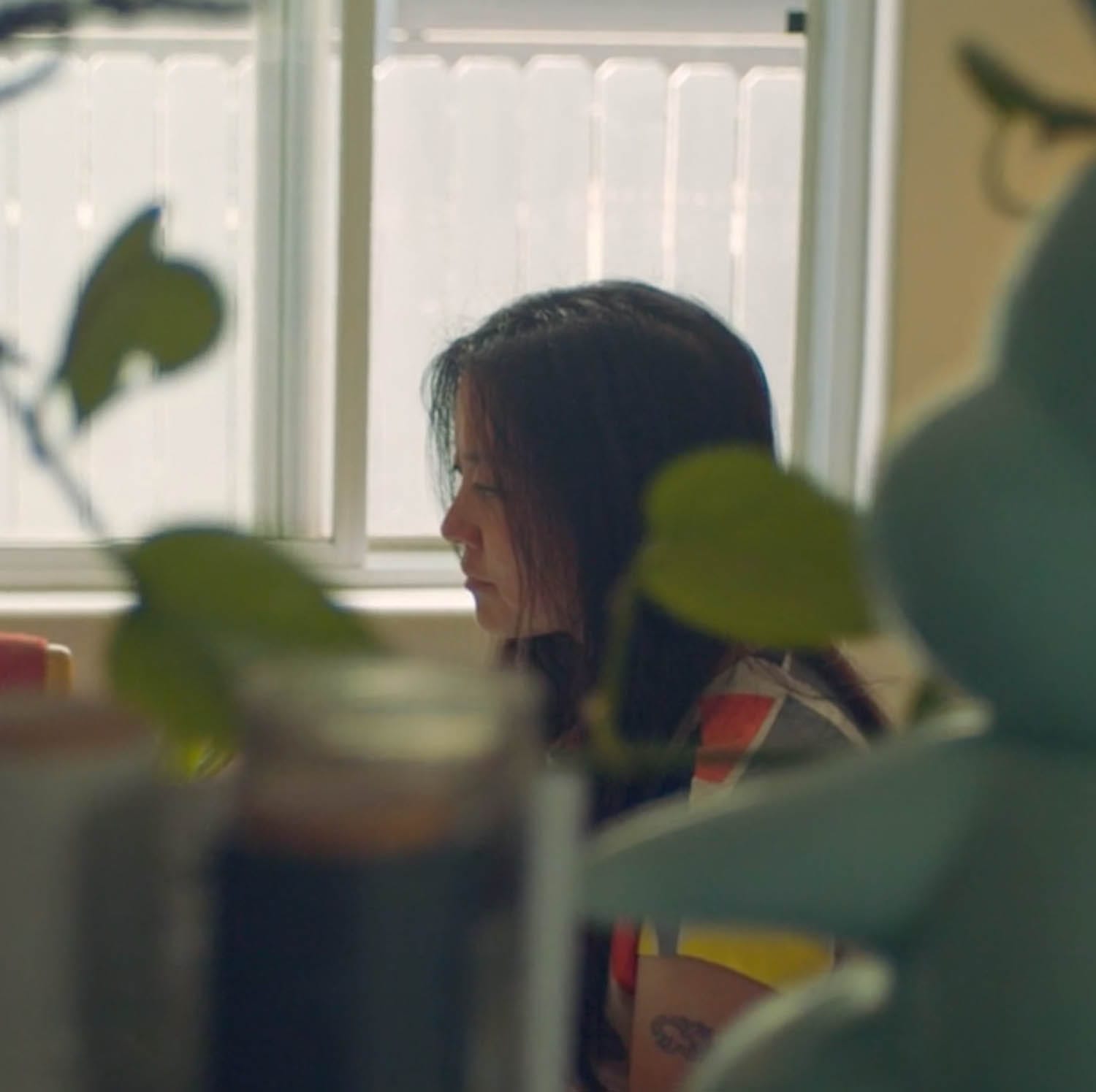A bumper sticker quote reading “Be like a fern — shade tolerant,” inspired the title of JiaHao Peng’s new, living installation at NeueHouse Venice Beach. The four sculptures reflect Peng’s kinship with plants, particularly those resilient to harsh conditions like low light and water. The photographer and horticulturalist brought us inside his verdant studio in Downtown LA and discussed his journey as a self-taught artist, working with flowers as a medium, and what people might learn from plants.
NEUEJOURNAL:
Much of your work combines multiple mediums/subjects: performance and photography, horticulture and movement, people and plants. What appeals to you about combining mediums.
JIAHAO PENG:
I am a multidisciplinary artist, and my practice revolves around connecting nature with modern living. I believe that various mediums excel at conveying distinct ideas and, when combined, contribute to a more powerful presentation. If my art were likened to a concert, photography functions as my microphone, while flowers and plants serve as my voice.
NEUEJOURNAL:
The work you’re doing at Neuehouse Venice Beach is in the realm of floral design, but you also have a background in photography. What’s your photography background and how has your relationship to that medium evolved over time?
JIAHAO PENG:
I went to school for photography and I have been a plant enthusiast since very young. In graduate school, I started making installations and sculptures that are inspired by photography, such as a huge walk-in pinhole camera. In the past three years, plants and flowers have been a huge part of my life – collecting, growing, making arrangements and installations. I continually reveal the interplay between the camera lens and greenery, using light in inventive ways to immortalize my subjects.


NEUEJOURNAL:
Some of your more recent work is with terrariums and other ornamental displays (like kokedamas), including a workshop where participants make their own terrariums. What appeals to you about this art form and about teaching this art to others?
JIAHAO PENG:
When I was learning how to make kokedama and terrariums, there weren’t really any places for me to go and play in person. I watched videos and taught myself everything about plants. I also faced many failures during my experiments. Hands-on experience is crucial when it comes to plant care and art making. Meanwhile, I was an adjunct professor before COVID and really enjoyed teaching and sharing. So, I hope to create a space and community for plant and art lovers to play and create through my workshops. I’m also collaborating with different professionals, such as the Southern California Orchid Society, and inviting them to my space to give lectures or conduct workshops. It’s not just about me teaching but also about building a community and learning from it.
NEUEJOURNAL:
You’ve mentioned elsewhere that Robert Mappelthorpe is an influence in your practice as an artist. Can you speak about what you’re drawn to in his work and how it influences your own art?
JIAHAO PENG:
He was an early inspiration at school. Photographing the human body and flowers somehow are the same, and his observations are so profound that even in black and white photos, they appear vivid and alive. He made people see things they had never seen before.

NEUEJOURNAL:
You moved to LA from Wenling, China several years ago. How has moving to the city of LA changed or influenced your art?
JIAHAO PENG:
I would say it has totally changed my view of how I perceive the world and what I’m passionate about. I moved from the Paleotropics to the Holarctic, and I’m experiencing so many different species, landscapes, cultures, and histories related to it. I have traveled to many countries, and LA, to me, is a miniature Earth with great diversity. All of these have broadened my eyes and given me more power in creating.
NEUEJOURNAL:
How has the art you’ve made recently evolved from your prior art? How does it differ from the art you made back home or in other places?
JIAHAO PENG:
They are more alive to me now. Literally, they are all live plants(I don’t use live plants in my early works), and spiritually, they are more therapeutic and healing.
NEUEJOURNAL:
Where are you finding inspiration lately?
JIAHAO PENG:
I have been going to old bookstores and finding decades-old art books, magazines, and prints. I also meet different people and listen to their stories as my inspiration. Last week, I encountered a subway repair technician in Paris, and he had a baby palm tree on his desk. I was so curious because it’s not a common house plant, and it was a seedling planted in a plastic bottle. I asked him where he got this plant, and he said he went to Morocco last year, brought back some dates, ate the dates, and left the core on the balcony, where it germinated. He planted it in the plastic bottle afterward. This small thing almost made me cry; it took me back millions of years ago, realizing how pure our relationship with plants is. This purity can even calm me down when I have a panic attack. We are nothing but like a plant on the earth; everything is a miracle, and just being existent is enough. Seeing a tossed seed germinating is a small hope that empowers me to create art and share the same feeling with others, making an influence.
NEUEJOURNAL:
What’s something new that you’re looking forward to in 2024?
JIAHAO PENG:
I will be hosting more plant and flower programs and workshops in 2024, aiming to build a bigger community and reach a larger audience. I’m planning a plant DJ night, an arranged veggie hot pot dinner, an annual plant swap, and more. I’m also super excited to collaborate with galleries and museums, conduct workshops, and showcase my works. I will be creating and exhibiting at the next Art In Bloom in the Indianapolis Museum of Art at Newfields in March.
—
Learn more about NeueHouse membership and apply to join here.



